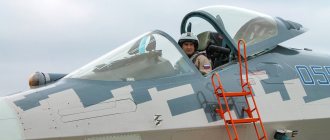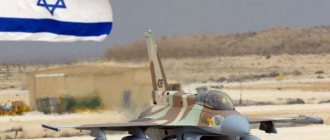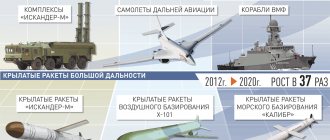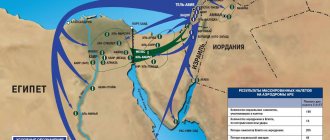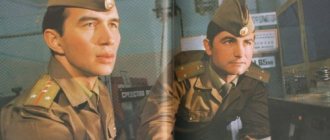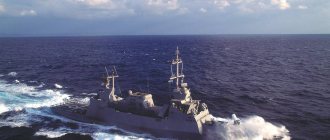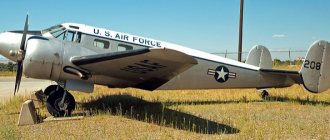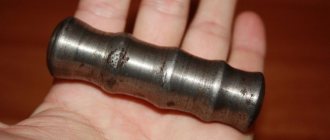Israeli aviation is at a high level of development and is considered one of the most advanced in the world. The IDF (Israel Defense Forces) established its own garrison of various aircraft immediately after the Declaration of Independence in 1948. The country's armed forces are divided into transport troops, infantry, reconnaissance and aviation.
History of Israeli aviation
Israeli Air Force insignia
In May 1948, when the independence of the State of Israel was proclaimed, its territories were subjected to repeated bombing by the Egyptian armed forces. To repel the aggressor, 3 dozen light aircraft were assembled, which were used for reconnaissance purposes, as well as for supplying provisions and weapons to isolated areas.
Israeli aviation noted significant successes during the armed conflict with Syria in 1967. Then the Jewish pilots managed to shoot down 6 enemy aircraft. In June of the same year, Israeli planes attacked a number of Egyptian military airfields, as a result of which they cut off support for infantry troops. On the next day of the armed conflict, Egyptian aviation losses amounted to more than 300 aircraft.
Sources provide various data regarding the question of how many aircraft Israel had in service during the October War of 1973. The Israeli Air Force had five hundred aircraft, of which there were 160 SkyHawk bombers and 100 Fantoms. Today, the country's aviation is in a state of permanent development, and according to financial analysts, it ranks fourth in the world in terms of economic growth dynamics.
General provisions
One of the most important aspects of Israeli strategic doctrine, designed to solve the problem of a small country surrounded by a numerically superior enemy, is the concentrated and coordinated use of air power against enemy ground forces and rear lines (which, among other things, reduces casualties).
Successful raids from Israeli territory into Uganda (Operation Entebbe to free plane passengers taken hostage on July 4, 1976) and Iraq (a nuclear reactor bombing on June 7, 1981) further demonstrated the importance of Israel as an operational base allowing the air force stationed here effectively control large areas of the Middle East and East Africa.
Israeli aviation structure
Flag of the Israeli Air Force
The strength of the Israeli Air Force is more than 33 thousand people, the number of reservists is 56 thousand. The commander-in-chief of the air force is aluf (major general). Subordinate to him are 6 air groups (directorates), the immediate leaders of which are brigadier generals (officers). Each department consists of departments divided into sections. The Israeli military aviation management structure looks something like this:
- Intelligence Department. Responsible for intelligence collection, reporting to the Army General Staff.
- The Air Operations Control Section coordinates briefings, conducts exercises, and resolves issues related to the practical application of air forces.
- The technical and material support department makes decisions on the implementation of the latest technologies and deals with logistics issues.
The Helicopter Fleet manages aircraft and consists of two attack regiments, each with 20 aircraft.
Aviation industry
Main article
:
Lavi (fighter)
In the 1980s, Israel developed a project for the production of new generation fighters “Lavi”. It was closed at the end of 1987 due to insufficient funding.[15]
Today, the products of Israeli industry include aircraft (light - for operational communications and maritime patrols, transport, unmanned aircraft, fighters and fighter-bombers). Aircraft converted by Israeli enterprises in recent years are in service with Croatia, Romania, Turkey, Zambia, Cambodia, Burma, Sri Lanka and other countries. Israel controls 90% of the global market for unmanned aircraft, with the US being the main buyer; Many other countries are also acquiring this equipment.
Israeli aircraft
Israel's first aircraft were Czechoslovakian Messerschmidts, which defended the country's borders from the invasion of Egyptian troops. Later, B-17 bombers, donated by American entrepreneur Al Schwimmer, entered service. They were used to retaliate against the Egyptians after the attack on Jerusalem in the summer of 1948.
B-17Gs from the 69th Squadron formed the main strike force of the Israeli Air Force
Drones
Israeli drones are represented by four models, the most advanced of which is considered the Elbit Hermes 450, equipped with laser, infrared and electro-optical sensors. The aircraft moves with low noise levels thanks to the use of rotary piston engines at speeds of up to 177 km/h. Hermes is designed for reconnaissance, air patrol and outdoor surveillance.
Elbit Hermes 450
The Israeli UAV garrison also features SpyLite, designed for the following tasks: fire support adjustment, reconnaissance and data collection. A special catapult is used to launch drones.
BlueBird Spylite
The Israeli Machatz UAV (IAI Heron) is considered the most popular drone. The model is equipped with a digital control system that allows two-way transmission. The IAI Elitan is based on the Heron, but is larger in size and equipped with a turboprop engine system.
IAI Heron
Fighters
F15 Eagle
Israel equips its air force exclusively with American-made fighters. The all-weather McDonell Douglas was developed by designers from NASA and the US Air Force during the Vietnam War. The F-15 was used in real combat conditions during an attack on the positions of Lebanese militants. The aircraft performed best in battles against Syrian MiG-23 BN attack aircraft and MiG-23 MF and MS fighters.
F-35 Lockheed Martin Lightning
The Israeli F-35 Lockheed Martin Lightning fighter is a stealth multirole bomber belonging to the fifth generation. When developing this aircraft, the experience and technical secrets of the Soviet design bureau named after Yakovlev, used in the process of creating the Yak-141, were taken into account. The F-35 entered serial production in 2011. Israeli engineers are currently busy developing a modernized version of the fighter, called the F-35I.
Educational
The Skyhawk A4 Douglas is a lightweight attack aircraft designed in the United States in the mid-twentieth century. It was used in a number of military conflicts between Israel and Palestine, as well as during the American-Vietnam War. If the aircraft's hydraulic system fails, it will be able to make an emergency landing using two external fuel tanks.
Skyhawk A4 Douglas
The Skyhawk was used as an aggressor attack aircraft, later known as the Top Gun, and made popular by a series of computer games. Skyhawk aircraft have been in service with the Israeli military since 1967.
Other aircraft
The general purpose aircraft in service with the Israeli Air Force is the Beechcraft Bonanza. The budget aircraft seats 5 passengers and a pilot, and is capable of traveling at speeds of up to 356 km/h at an altitude of more than 2.5 km. The vessel has good maneuverability and does not require a long runway to accelerate. The Beechcraft Bonanza is powered by an advanced piston engine and can travel over 1,780 km on a single fill-up.
Beechcraft Bonanza
Among the combat aircraft expected to be delivered by the Israeli Air Force in the near future, it is worth highlighting the F-35 Lockheed Martin Lightning 2. An improved model of the legendary fighter-bomber is capable of vertical landing and costs more than $160 million. The development of a non-afterburning supersonic aircraft cost 400 billion. F-35s are equipped with multifunctional radars that operate against both ground and air targets.
F-35 Lockheed Martin Lightning 2
Air defense troops
In Israel, all specialized air defense systems, except for naval ones, are concentrated in the air defense forces (Heil nun-mem; “nun-mem” is an abbreviation for “ neged matosim”
" - literally "against the aircraft") that are part of the Air Force.
Air defense is a combat branch of the military; recruits are required to have a high medical profile. Training of combat personnel takes place at the Air Defense School (BISNAM-833, formerly located in Herzliya, later transferred to Mashavei Sade), technical personnel - at the Air Force Technical School in Haifa.
Maintenance of air defense systems is carried out by the Air Force Systems and Weapons Maintenance Center (Matnam, Merkaz tahzukat neshek u-ma'arahot), as well as civilian companies. Missile testing and most air defense system firing exercises are conducted at the Missile Testing Unit (YANAT, Yehidat Nisuey Hatilim) in Palmachim. Other shootings are carried out at the Shedma training ground (in the south of Israel, in the Mitzpe Ramon area).
The tasks of air defense include:
- Providing air defense for the country. This task is performed by Patriot anti-aircraft missile systems and advanced HAWK systems in cooperation with the command and control system and fighter aircraft.
- Ensuring the country's missile defense. The warning about the launch of ballistic missiles towards Israel comes from a network of American early warning satellites. The interception is carried out by specialized Hets-2 anti-missile missiles, and in case of failure - by Patriot missiles.
- Defense of individual military and civilian facilities (for example, Air Force bases, nuclear center in Dimona).
- Air defense of ground forces. This task is performed by mobile air defense systems; their divisions are armed with the Stinger and Chaparral anti-aircraft missile systems, as well as the Makhbet missile and artillery systems.
- Security and ground defense of Air Force bases.
The first air defense systems (40-mm L-70 anti-aircraft guns) were supplied to Israel by the German government in 1962; in the same year, the first HAWK anti-aircraft missile systems arrived in Israel from the United States. It was Germany and the United States that supported the development of Israeli air defense throughout the subsequent years. As of 2002, Israel had 22 batteries of heavy anti-aircraft missile systems, as well as approximately 70 man-portable light anti-aircraft missile systems.
Commanders of the Israeli Air Force
Commanders of the Israeli Air Force over the years
The current commander-in-chief of the Israeli Air Force is Amikam Norkin, who was awarded the honorary rank of major general. He graduated with honors from the National War College and received a diploma from the main University of Haifa. Master of Sociology, author of a number of dissertations and scientific works on the topic of modernization of military aviation, the army and the country's weapons.
Commander-in-Chief of the Israeli Air Force Amikam Norkin
Content
- 1. General Provisions
- 2 Israeli Air Force personnel and weapons
- 3 Air Defense Troops
- 4 History of the Israeli Air Force 4.1 Beginning
- 4.2 Six Day War and War of Attrition
- 4.3 Yom Kippur War
- 4.4 Lebanon War
- 4.5 Late 20th century
- 4.6 Second Lebanon War
- 8.1 Video
Notes
- Israel bought an additional F-35 squadron - cheaper under Trump 9tv 08.27.2017
- Article " Betar
" in the Electronic Jewish Encyclopedia - Article " Palmach
" in the Electronic Jewish Encyclopedia - ↑ 4,04,14,24,3 Article “ State of Israel.
Foreign Policy " in the Electronic Jewish Encyclopedia - ↑ 5.05.1 Article “ War of Independence
” in the Electronic Jewish Encyclopedia - ↑ 6.06.1 Bombs over Jerusalem - Jewish.ru
- Death of WWII flying ace Buzz Beurling still a mystery By Peter Worthington ,QMI Agency Toronto Sun
- Article " Tzur Zvi
" in the Electronic Jewish Encyclopedia - Article " Six Day War
" in the Electronic Jewish Encyclopedia - Article “ State of Israel.
Historical sketch. » in the Electronic Jewish Encyclopedia - Article " Yom Kippur War
" in the Electronic Jewish Encyclopedia - ↑ 12,012.1 Article " Lebanese War
" in the Electronic Jewish Encyclopedia - Article " Gadna
" in the Electronic Jewish Encyclopedia - ↑ 14,014.1 Article “ Gantz Benjamin
” in the Electronic Jewish Encyclopedia - ↑ 15,015,115,2 Article “ Halutz Dan
” in the Electronic Jewish Encyclopedia

